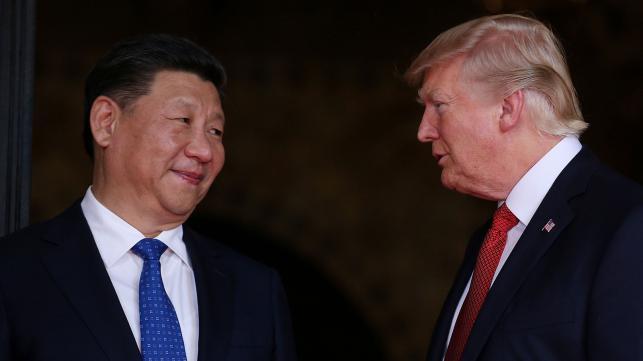China trade surplus with US eases

China’s trade surplus with the United States eased in July, when President Donald Trump imposed stiff tariffs on billions of dollars worth of Chinese goods in a showdown between the world’s two biggest economies.
The figures on Wednesday come as the two exchange threats of further measures, which have fuelled fears of a trade war many observers warn could hammer global business.
Beijing reported a $28.1 billion surplus for July, down from the record $28.9 billion seen in June. China’s gaping trade surplus with the United States has been a constant bone of contention, with Trump accusing the country of unfair practices, stealing American jobs and thieving its technological know-how.
China’s global trade surplus fell even more, from $41.5 billion in June to $28 billion in July as imports and exports soared.
The dip in China’s US surplus is unlikely to ease tensions with the Trump. The White House on July 6 imposed 25 per cent tariffs on $34 billion of Chinese products entering the US, triggering an instant tit-for-tat response from Beijing.
US officials said Tuesday they would slap 25 per cent levies on another $16 billion worth of Chinese imports from August 23.
The move had been widely expected but with China lining up retaliatory measures it reinforced worries that the two sides are heading for an all-out trade war that could hammer the global economy.
The US has also lined up another $200 billion worth of Chinese imports to target in future.
American imports far more from China than the other way around, meaning Beijing may at some point need to look for other means of retaliation.
‘Easy to win’
The office of US Trade Representative Robert Lighthizer said its “exhaustive” investigation showed “China’s acts, policies and practices related to technology transfer, intellectual property and innovation are unreasonable and discriminatory and burden US commerce.”
US officials said there were 279 new goods to be targeted in the latest round of tariffs, including motorcycles, tractors, railroad parts, electronic circuits, motors and farm equipment.
The dispute has continued to escalate, with Trump last week threatening to raise to 25 per cent from the planned 10 per cent tariffs on the next $200 billion in Chinese imports his administration plans to target.
Beijing has called on US officials to be “cool headed”, but said last week it would impose duties on an additional $60 billion in US goods, a threat the White House dismissed as “weak”.
Trump has boasted that trade wars are “easy to win” and warned he would hit virtually all Chinese imports if Beijing does not back down and take steps to reduce its $335 billion US trade deficit.
US industries and farmers have been caught in the crossfire, and the Trump administration announced $12 billion in aid to help farmers hurt by Chinese duties on crops such as soybeans.
The US-China trade war will cut the global gross domestic product by 0.7 per cent by 2020, Oxford Economics said in a note on Tuesday.
Despite the tariffs war with the US, China’s worldwide exports rose a better-than-forecast 12.2 per cent in July, while imports were up a much-higher-than-expected 27.3 per cent.
